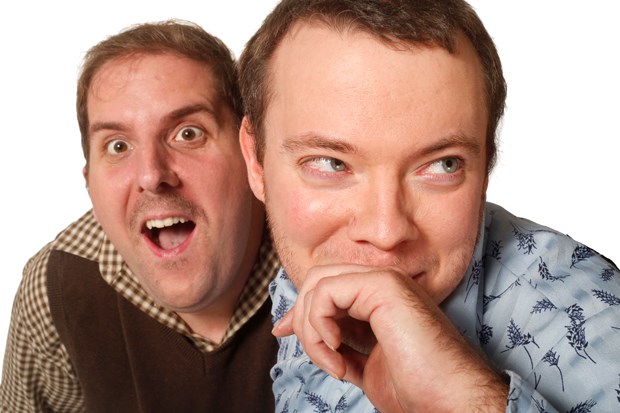Creeps. Realwheels production at The Cultch, to Dec. 10 at 8 p.m. For more information visit thecultch.com.
There is a condition many people with disabilities deal with every day, a condition for which there is no known cure.
It’s called condescension.
An actor with a disability mentions he’s on his way to work:
“Oh, you work? Good for you.”
He says he going to buy gloves:
“Good for you!”
“A lot of them are good-for-yous,” explains actor David Kaye. “Most of the time, people with the best intentions are the most insulting.”
Kaye is part of a landmark cast of Creeps. For the first time the dark comedy about people with disabilities is being performed by a cast that includes actors who live with disabilities
The play is set in a bathroom that works like a sanctuary for characters who have heard themselves called “poor blunders of God.”
They spend most days sanding blocks and weaving rugs at a sheltered workshop: doing dull work for abysmal pay. The workshop’s real function, we learn, is to eat up the idle time of men who don’t have an attic to get stuffed in and whose neighbours would be distressed to see them “out in the street, clashing with the landscape.”
The play was written by David E. Freeman, who also lived with cerebral palsy. Freeman wrote each word of about resentment, seething anger, and the distinction between shit and pityshit on his typewriter with a stick held between his teeth.
Speaking to the North Shore News one day before the play’s first preview, Kaye reflects on the way Creeps’ 1971 debut “changed the Canadian theatre landscape.”
Up until that point, the Canadian theatre scene was either being “helped along or controlled” by an expat British theatre community, Kaye explains.
“The characters in Creeps are in this paternalistic, one-size fits all system. And they’re being helped by a system that’s perceived to be progressive.”
Kaye was invited to audition for the show by director Brian Cochrane. Despite an association going back to their days at UBC, Kaye says he was hesitant to play a character with a disability.
“There are a lot of challenges associated with that that I didn’t necessarily want to touch with a 10-foot pole,” he notes. “This is a play that hasn’t been done very much specifically because it has the potential to be wildly offensive.”
Kaye was hoping to play Sam, a salty-tongued pessimist/realist who could go the rest of his life without ever weaving another rug or sanding another block.
Instead, Kaye was tasked with playing a quartet of characters including the dutiful Michael as well as a Chef, Puffo the Clown (“I will be doing balloon animals, surprise, surprise.”), and the Carnival Barker.
The Carnival Barker takes over the stage to make an “ironic sales pitch for living with cerebral palsy,” Kaye explains, easily sliding into his informercial huckster voice: “’But wait, call now and we’ll throw in something extra.’”
Besides casting actors living with disability, consultants also came in to make sure the performances were technically accurate.
“Cerebral palsy manifests very uniquely in every person, it’s almost like a fingerprint,” Kaye says.
For Kaye, the challenge was in figuring out how his character’s cerebral palsy might manifest. But while the play is about people with cerebral palsy, it’s also about needing a place to be funny and to be frustrated, even if it’s a bathroom.
“It’s all rooted in the experience of the oppressed,” Kaye says. “I think it’ll give today’s audiences a rare glimpse into the living experience of people with disability, even though it’s filtered through a 1970s lens.”
The play will hopefully be a catalyst for much-need conversation, according to Kaye.
“Disability is part of the range of human experience and there’s value in reflecting it on our stages,” he says.
The Dec. 4 and 6 performances are slated to include post-show discussions in which audience members are encouraged to say whatever is on their mind, except of course, “Good for you!”



